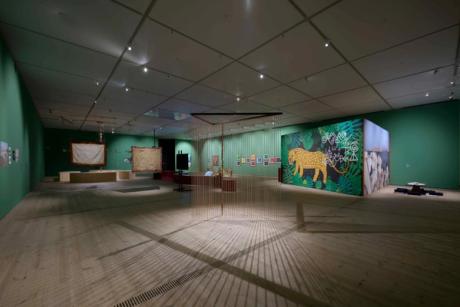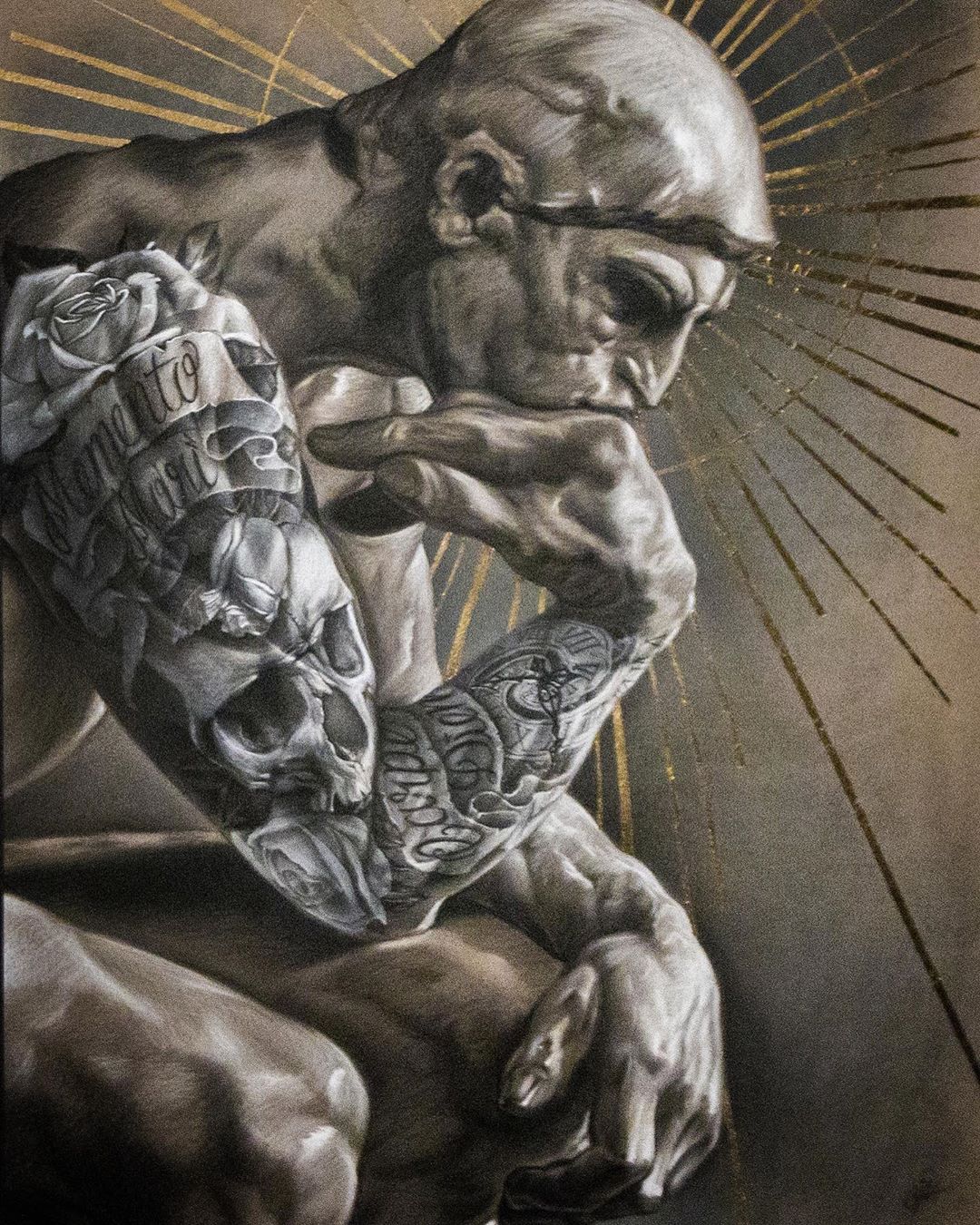Mr. Shadow 5
2018 - Photography (Photography)
112.5 x 167 cm
Nontawat Numbenchapol
The series of prints titled Mr. Shadow by Nontawat Numbenchapol engages with the history of and current state of militarization in Thailand. Each print features an invisible person, their silhouette only outlined by the military fatigues that they wear. The faceless figure in each work is pictured either in solitude or interacting with other camouflage-swathed ghosts. Ironically, the camouflage attire of each figure is the only part of them that is not erased by the artist. Photographed on a mountain range at the border between Shan State in Myanmar and Northern Thailand, the Mr. Shadow series epitomizes the haunting presence and effects of a militarized modernity and nation-state building across the region. In this iteration of the photo series, a solitary figure in full military fatigues leans against the base of a tree, assumedly strumming a guitar to pass the time. Though the compositions and imagery may differ across the images, what ties this series together is tension; there is a discernible sense of latent expectancy or apprehension that permeates the figures in waiting. Though the compositions and imagery may differ across the images, what ties this series together is a temporal tension; there is a discernible sense of latent expectancy or apprehension that permeates the figures in waiting.
Nontawat Numbenchapol is primarily known as a film director and television screenwriter, widely recognized for his documentary work. His moving image work is considered part of Thailand’s film wave exploring politics and the social sphere through poetics and cinematography. His work often unpacks societal and historical complexities in the porous geographies of inland Southeast Asia. Through an experimental documentary aesthetic, Numbenchapol’s work captures the stories of local people, refugees and immigrants, people marginalized by neo-colonial capitalism, and portrays them as living archives. He has made films and photographic installations concerning the contested Thai-Cambodia border and the holy archaeological site at its epicentre. Numbenchapol’s Mobile Lab Project researches experimental ways of visual and sound perception in humans.
Colors:
Other related works, blended automatically
» see more
Related works sharing similar palette
» see more

© » THEARTNEWSPER
The latest exhibition at England's Baltic sets a whole new bar for showing art in a climate crisis Art market Museums & heritage Exhibitions Books Podcasts Columns Technology Adventures with Van Gogh Search Search Green is the New Black blog The latest exhibition at England's Baltic sets a whole new bar for showing art in a climate crisis Stepping Softly on the Earth embodies the themes of sustainability and interconnectedness both in its theme and how it has been put together Sponsored by Louisa Buck 6 February 2024 Share Stepping Softly on the Earth brings together work by more than 20 artists from across the world, whom together challenge our human-centred perspective Photo: John McKenzie @ Baltic Centre for Contemporary Art Green is the new black In this monthly column, Louisa Buck looks at how the art world is responding to the environmental and climate crisis...
Other works by: » Nontawat Numbenchapol
» see more
Related works found in the same semantic group
» see more

© » KADIST
Sanya Kantarovsky
2015Wrong Currency (Monday, Tuesday, Wednesday, Thursday, Friday) by Sanya Kantarovsky uses the stylistic vernacular of five separate artists to create a series of five lithographs, dealing with a series of apparently unrelated happenings, each staged as one “day.” The series takes up Kantarovsky’s theme of embarrassment across a variety of scenes, each populated by multiple figures, set in a disjunctive relation...

© » KADIST
Nidhal Chamekh
2016Nidhal Chamekh made the first drawings of the ongoing series Mémoire Promise in 2013...

© » KADIST
Nidhal Chamekh
2016Nidhal Chamekh made the first drawings of the ongoing series Mémoire Promise in 2013...






